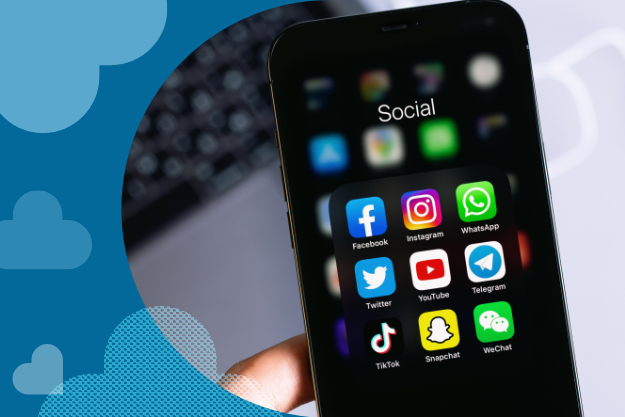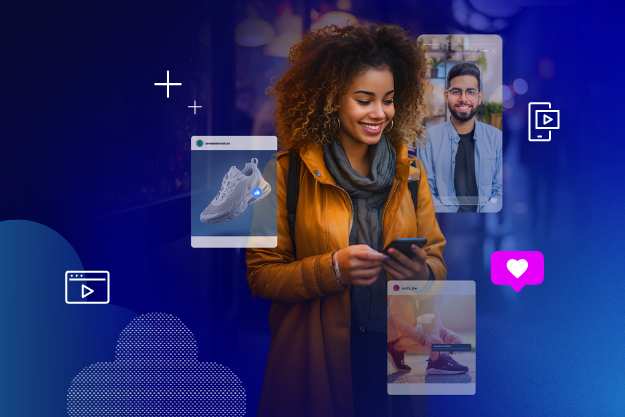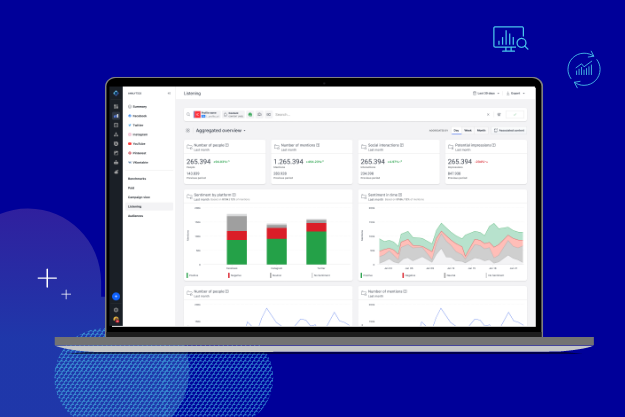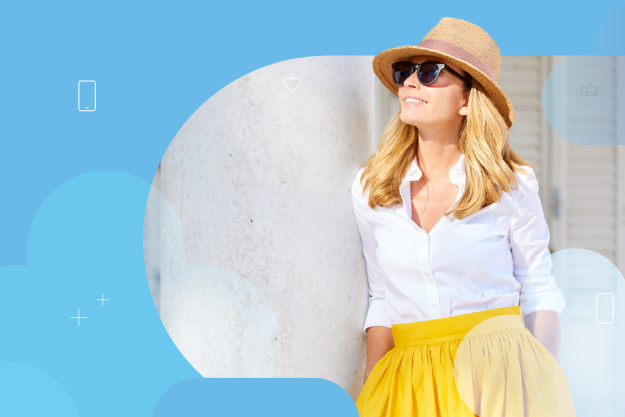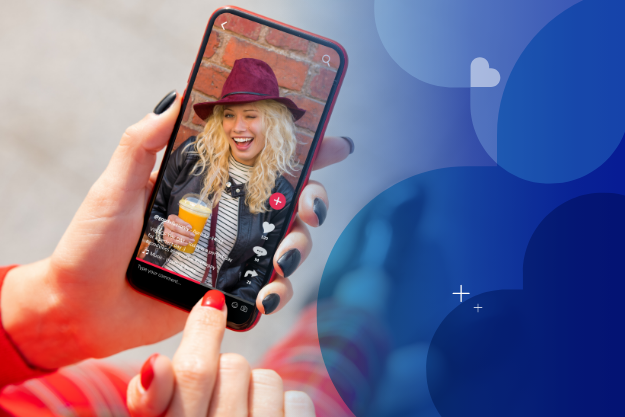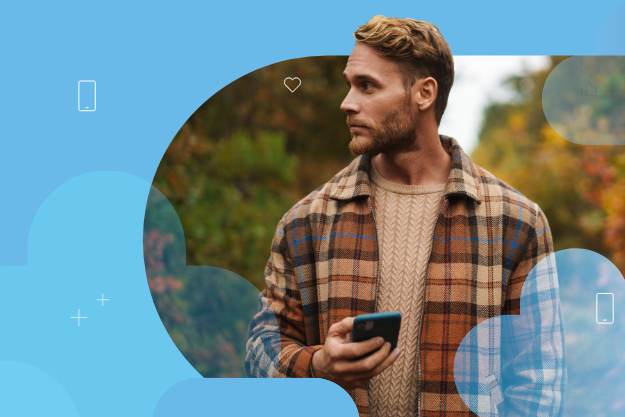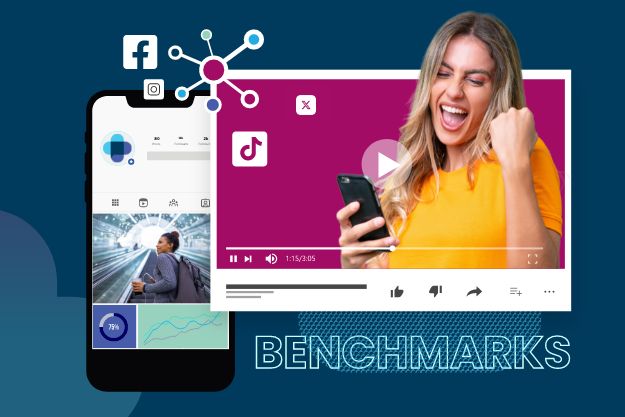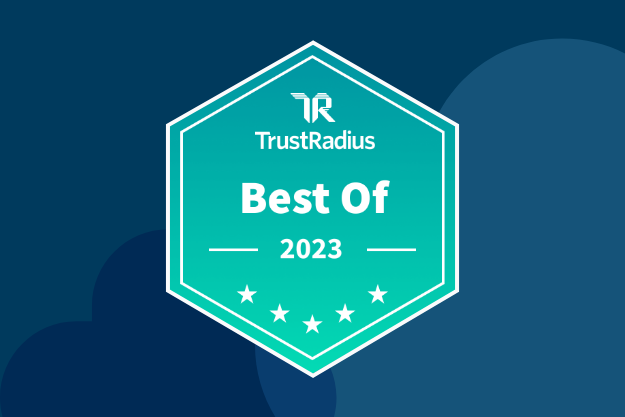It’s no coincidence that the birth of social media lines up nearly perfectly with the generational shift from Millennials to Gen Z. The world changed somewhere between 1996 and 1997 with the founding and launch of Six Degrees, a social networking site largely considered the first of its kind.
The site shared many of the foundational features we expect from today’s social networks – profiles, friend lists, school affiliations, and private messaging. At launch, Mark Zuckerberg was only 13 years old, Friendster was another five years away, and hashtags were still referred to as “the pound symbol.”
Times have changed, and they continue to change. It’s now critical for brands to not only have a social media presence, but to master the ever-evolving communities, styles of communication, and integration of social commerce to keep pace with the modern consumer.
Let’s explore the social media channels that your brand needs to know right now, and while we’re confident you already know most of these, it never hurts to revisit why you might be using them in the first place. As these platforms evolve, so too must your company's strategies for leveraging them.
What to look for in a social media channel for your brand
Selecting the appropriate social media channels for your brand involves several considerations. It’s critical to consider each of these on how you go to market and attempt to build digital communities within each channel. Authenticity is usually an ideal starting point, but what that means changes considerably based on these three factors:
Audience
Different social platforms attract different demographics. Analyzing and understanding your target audience and where they hang out online is crucial. You can’t build brand awareness, engagement, or a sense of community if your target audience isn’t active and engaged on a particular social channel.
Features
Each platform has unique features that can enhance your brand's message and interaction with customers. But make sure you understand those features and how they apply to your overall brand, marketing, or content strategy. For example, TikTok is purely for video content, so don’t assume static content types – like those common on LinkedIn (e.g., slides, PDFs, infographics) will necessarily translate.
What each channel does, and how it does it, is a fundamental understanding required for a social media strategy.
Vibes
It’s easy to forget this one. Every social media platform has its own vibe or culture, and it’s likely each will evolve over time. Aligning your brand with a platform that shares its tone and values can lead to more engagement. There’s just a considerable difference in how followers will react, share, and engage on some channels, so make sure you understand that before jumping in.
Why a brand might not want to use certain social media channels
While social media provides great opportunities, it's not always a one-size-fits-all solution. Some platforms may not align with your brand's image or audience. It’s also fair to say that stretching your resources too thin across multiple platforms can dilute your message and impact.
Quality over quantity is a good rule to follow, and if your brand is confused about which hot new social channel is worth your brand’s attention – and how to enter it – make sure your social media manager has a voice in that conversation. It’s worth the time to organize, analyze, test, and trial before trying to make waves in a space you don’t understand.
Which social media channels are likely essential for my brand?
Let’s start with the ones that you know but, more importantly, the channels that are likely essential for your brand. What qualifies a channel as “essential”? First and foremost, audience or, more specifically, monthly active users (MAUs).
It is social media, after all. If your brand is to utilize a channel, it not only has to have the audience you’re looking for, but it fundamentally has to have a substantial audience to serve your marketing requirements. Naturally, this list is going to seem familiar.
Founded in 2004, Facebook is still the king of the social media landscape, and it holds key integrations into other channels on this list. It’s difficult to overlook 2.98 billion MAUs (2023), which means it’s likely that your audience likely has some presence on Facebook, regardless of demographics.
Facebook offers a wide range of advertising and networking tools, making it ideal for companies looking to connect with those audiences both on the main channel and the entire Meta network. Facebook Pages and Groups allow businesses to build communities around their brands. Brands such as Coca-Cola and Samsung have large, active communities on Facebook.
It’s important to note that to run ads on Instagram, you’ll need both a Meta Ads Manager (ad account) and a Facebook Page, meaning despite the parent company’s rebrand, much of Facebook’s ecosystem still works together.
Acquired by Facebook in 2012, Instagram's focus on visuals and multimedia makes it one of the most popular social media channels — particularly among younger, trend-conscious demographics — with over 2 billion MAUs. Fashion brands like H&M are among those that utilize Instagram effectively.
Brands can use Instagram Posts, Stories, Reels, and Shopping features to share their stories and products, but do keep a watchful eye on the channel’s features. Instagram is known for shifting its user experience and continually trying to keep pace with what Meta sees as consumer expectations.
LinkedIn is the largest professional networking platform. It's ideal for B2B businesses, thought leadership, and recruiting efforts. Companies like Microsoft – which owns the channel – and Google maintain robust LinkedIn presences.
Traditionally, LinkedIn’s audience – 875 million members worldwide – reach is smaller and less active daily due to the nature of the platform. That doesn’t make it less essential, though, as LinkedIn offers B2B brands and employer brand marketers an oasis from the broader audiences of other social media apps.
Brands can reach target audiences based on title, role, experience, school affiliation, company, and location or, more simply, the information that users provide in their LinkedIn profile. And content on the channel is evolving, but largely involves insights and thought leadership, which is beneficial to specific types of marketing.
TikTok
TikTok is a short-form video platform that’s massively popular among Gen Z audiences. Its creative, often humorous content provides opportunities for viral marketing campaigns. Brands like Chipotle have experienced success with engaging TikTok campaigns by posting videos that fall into the short-form feel and vibe of the channel.
There is uncertainty around the future of the app’s availability in the United States, but it’s difficult to ignore TikTok’s overwhelming popularity. It was the most downloaded app globally in 2020 and 2021, hitting a peak in Q1 2020 with a record 318 million downloads out of China. It’s expected to reach 1.8 billion MAUs by the end of 2023, meaning it’s past time for your brand to evaluate it as part of your social media strategy.
YouTube
It’s important to not forget YouTube when thinking of “essential” social media channels. It’s just not a social media channel, at least, according to its leader.
Owned by Google, YouTube is the go-to platform for video content. Tutorials, product reviews, vlogs, and live streams are popular content types here. Brands like Red Bull have capitalized on YouTube's massive audience for thrilling, unique content.
With 2.5 billion MAUs, YouTube is the world’s second-largest search engine and is a thriving digital ecosystem that demands your brand’s presence. While not fully a social media channel, it does offer features like Shorts, Live, and Community, which play off of traditional audience expectation for social engagement. So, it’s important for your brand to think of it as more than just a library as it offers a path to social commerce that could be pivotal to your brand.
WhatsApp is a messaging app popular worldwide with 2 billion MAUs. Its functionality involves traditional text-based communication, but Meta has grown its business use significantly over the past few years.
Brands can use its business version to connect directly with customers. It's often used for customer support, updates, and local businesses, but it’s likely that its features will continue to expand, meaning it would be worth mapping a way to integrate its use case into your brand’s customer journey.
Twitter (rebranded as X in July 2023)
It’s safe to say that Twitter has undergone some changes — and continues to change — but it remains a force among social channels for sharing real-time information like news, updates, and customer service interactions. It's also a powerful platform for influencer marketing. Brands such as Wendy's and Moon Pie have leveraged Twitter's unique vibe for viral marketing campaigns.
Twitter’s status as essential will continue to evolve as the platform’s audience – more than 353 million users worldwide in 2023 – shifts. So, among all channels, it’s pivotal to evaluate your followers on your brand account and observe how they change in the coming year.
Which social media channels are worth consideration by my brand?
Essential can mean different things to different brands. What’s different about these next social media platforms is that each represents a unique opportunity worth evaluating and considering when managing your social media strategy. In some cases, the app is new. In another, the audience is smaller than a more successful peer. So, tread carefully and with purpose as you expand into these channels.
Snapchat
Snapchat's ephemeral content and AR features appeal to younger audiences, but it has struggled to replicate the business and brand success of apps like TikTok in recent years. With 635 million MAUs, it’s still a major player in the social media space, and has pushed innovations in the space with its features, functionality, and AI integrations.
The channel – similar to other video-first apps – is great for behind-the-scenes looks, limited-time offers, and interactive experiences. Brands like Taco Bell have used Snapchat's AR lenses effectively to capture consumer interest.
Pinterest – with 445 million MAUs – is a platform for finding and saving ideas, making it ideal for brands with visually appealing products. It's popular among women planning events or projects. Brands like IKEA use Pinterest to showcase their products in action, and in many cases, inspire users while subtly highlighting their products.
If your brand has visual flair or, in particular, a connection to design, consider Pinterest to be essential for connecting with a segment of your audience.
Reddit is a platform where users submit content to various communities (known as "subreddits") based on different topics. Brands can engage with niche communities relevant to their industry, but the audience can be skeptical of overt advertising, so a more genuine engagement strategy works best here.
The channel offers specific ad types and targeting opinions to help brands reach new audiences. It’s important to understand that those audiences can, on occasion, be polarizing, so it’s not for everyone. You need a plan in place if testing Reddit’s waters doesn’t go as planned.
WeChat might be essential for brands with a large presence in China. The messaging platform has over 1.3 billion users, and recently expanded its social commerce power with its Apple WeChat store.
Vimeo
Vimeo is a video hosting, sharing, and services platform known for its high-quality content. Businesses use it for professional-grade videos, customer testimonials, and product demos. And yes, it fits into the same category as YouTube as part of the social media ecosystem, but not necessarily a full-blown channel. It’s worth evaluating the channel’s video production offerings for hosting and distribution of video content.
What should my brand know about the field of Twitter competitors?
Yes, it’s worth looking at this category on its own. The competitive landscape for text-based, real-time content channels has exploded, and new channels offer a mix of opportunity and brand sensitivity.
Each of these channels functions very closely to Twitter, focusing on real-time conversations shared between followers and creators.
Threads
Threads is an app developed by the Instagram team for more personal, small-group communication. While not primarily a business platform (yet), it can be used for intimate, exclusive content for select followers. The channel is still working through how content is shared through its algorithm, so brands should consider it a test and evaluate option. Currently, there aren’t advertising or sponsored content options available.
Bluesky
Bluesky is still in its early stages and started with considerable buzz as it was introduced by Twitter’s former CEO in 2019. Many creators, media personalities, and influencers are already on the channel, with users joining a waitlist for access.
Mastodon
Mastodon, founded in 2016, is a decentralized social network. Its ad-free, community-led nature can appeal to niche audiences and those looking for an alternative to mainstream platforms. Mastodon is unique in that communities are broken up within different servers and networks, meaning any brand pursuing activity here will have to focus on organic engagement and selective participation within those communities.
Sina Weibo
Sina Weibo is often dubbed "China's Twitter.” If your brand has a market in China, this platform can be instrumental due to its large user base and integrated services.
What other social media platforms should my brand be aware of?
Depending on the nature of your brand, there is likely a small business case for each of the following channels. But they share unique audiences, approaches, or purposes within the communities they serve.
Twitch
Owned by Amazon, Twitch is a live-streaming platform primarily used by gamers, but it has been expanding to other forms of live content. Brands can advertise, sponsor influencers, or even host their own streams to engage with Twitch's notably engaged and loyal user base.
What might enhance a brand is that this audience is vast – a League of Legends broadcast scored over 51.3 billion views – and has the largest proportion of Gen Z (55%) to total audience size of any digital community.
Discord
Originally designed for gamers, Discord has expanded to host a wide variety of communities. Brands can create servers to build communities, offer customer service, and engage directly with their most dedicated fans.
Nextdoor
Nextdoor is a hyperlocal social networking service for neighborhoods. For local businesses, this can be a great way to engage with a local community, promote deals, and respond to customer inquiries or feedback. The channel is focused on local communities, so brands should be thoughtful in their approach here.
Quora
Quora is a question-and-answer platform where users can ask questions and get answers from both experts and enthusiastic community members. It’s more a forum than a true social media channel, but brands can use Quora to establish thought leadership and engage with a knowledge-seeking audience.
The knowledge exchange aspect makes Quora’s audience unique, and brands who contribute to that conversation might discover opportunities to connect with highly engaged consumers and establish immediate credibility.
Telegram
Telegram is a messaging app that allows for large groups and channels, making it good for mass communication, updates, and community-building. Its user base isn't as large as other networks mentioned in this article – currently 700 million MAUs – but its focus on engagement, community, and exclusivity could benefit the right brand.
Yelp
Yelp has long been the source for consumer reviews and feedback. The channel is currently more of a marketplace than traditional social media, but it does come with a dedicated and passionate community that a brand may want to reach locally or nationally. So, while it is effectively location-based social media, that could still be a place for your brand to thrive.
How to keep pace with a changing social media landscape
In an ever-evolving digital landscape, understanding the strengths and audiences of different social media platforms is vital for brand growth. However, remember that the most effective platforms for your brand will depend on your specific goals, target audience, and resources.
It's not about being everywhere. It's about being where it matters most to your brand, and that typically means following the audience. The most successful social media strategies come from brands that understand where their audience is (and isn’t), what kind of content they want, and how the brand can provide value.
When possible, a social media management solution is the right foundation to bring your strategy together as you test, evaluate, and track performance on any new channel. Book a demo of our Social Marketing Cloud today to learn how Emplifi can help.













